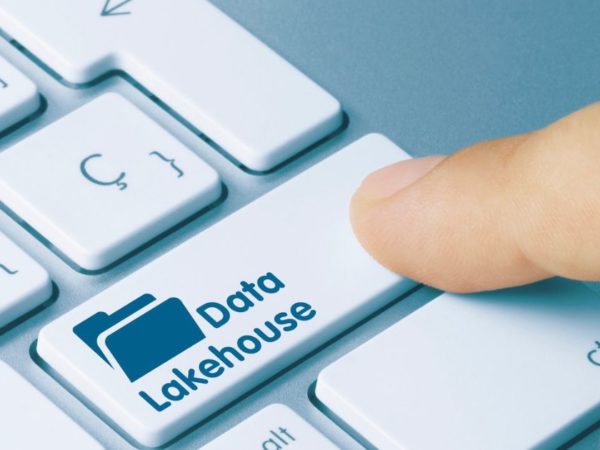Today’s businesses collect vast amounts of data from various sources, including customer interactions, website visits, social media activity, IoT devices, and more. The more the data is, the more these companies have to invest in a data governance framework.
According to a Forbes survey, 71% of companies predicted that their investment in data governance would increase drastically to improve data quality, consistency, and reliability. Data governance ensures the enhancement of an organization’s complete data life cycle. At the same time, the data governance framework defines the practical and actionable outlines for data governance.
What Is Data Governance?
Data governance refers to the policies, procedures, and standards organizations use to manage their data assets. It encompasses various activities such as data quality management, data privacy, and data security.
A real-world example of data governance is the General Data Protection Regulation (GDPR) implemented by the European Union. The GDPR regulates how organizations collect, process, and store the personal data of individuals within the EU and sets strict rules for data protection and privacy.
Why Is Data Governance Important?
World’s largest companies, like Amazon, Microsoft, Facebook, and Google, collect vast amounts of customer data. They use this data to improve their services with an enhanced personalized experience as well as improve every segment of the business with a data-driven approach.
The successful handling, management, and implementation of big data assets are only possible with a proper data governance plan. The measures included in data governance are so vast in enterprise data management.
As per reports, Facebook and Google handle databases of more than hundreds of petabytes. The vastness brings complexity to the data life cycle, so data governance frameworks come into the picture. Everything defined within the data governance program of an organization will practically be implemented with the help of a framework.
A data governance framework is a structured approach to managing an organization’s data assets. It provides a set of guidelines, policies, procedures, and best practices that enable effective data governance.
How Does Data Governance Framework Work?
A data governance framework typically includes a governance structure, policies, quality management, architecture, and security. It is essential to understand the difference between data governance and framework, as data governance is a broader concept.
Data governance involves multiple stakeholders, including business leaders, IT professionals, data stewards, and compliance officers. The responsibility of establishing and maintaining a framework typically rests with a designated data governance team or committee composed of representatives from different areas of the organization.
Ultimately, everyone in the organization has a role to play in ensuring effective data governance, and it requires a culture of shared responsibility, accountability, and collaboration.
Goals Of The Data Governance Framework
Data Quality: The data governance framework ensures data quality by establishing standards and processes to ensure data accuracy, completeness, consistency, and validity.
Privacy and Security: Data governance supports data privacy and security by defining policies and procedures to protect sensitive data from unauthorized access, disclosure, and misuse.
Accessibility: It increases data availability and accessibility by creating a system that provides access to reliable and accurate data to authorized users and reduces data silos and duplication.
Optimized Usage: Data governance frameworks allow organizations to optimize data usage by promoting the effective use of data in decision-making, enhancing data analysis capabilities, and identifying opportunities for data monetization.
Ensure compliance: Frameworks ensure that data management practices align with legal, regulatory, and contractual obligations within and outside the organization.
Collaboration: With a framework, collective teamwork becomes easier by fostering communication and collaboration between different business units, stakeholders, and IT teams to promote a shared understanding of data and its use.
Reduced Risks: A framework reduces the risks by identifying and mitigating potential data-related risks and ensuring business continuity in the event of a data breach, outage, or disaster.
Steps To Create Data Governance Framework
Step 1: Define the scope and goals
Identify the business units, data domains, and data-related risks that need to be covered by the framework, and define the goals and objectives of data governance.
Step 2: Identify stakeholders
Identify the key stakeholders who will be involved in data governance, such as business leaders, data owners, data stewards, IT professionals, and compliance officers.
Step 3: Establish a structure
Create a governance team or committee responsible for defining data policies, procedures, and standards and monitoring data quality, security, and compliance.
Step 4: Create a data inventory
Identify all the data assets within the framework’s scope and create a data inventory that includes metadata, such as data lineage, ownership, and usage.
Step 5: Define data policies and standards
Create policies and standards that define how data should be collected, stored, processed, and shared and how data quality, security, and privacy will be ensured.
Step 6: Implement data governance processes
Define the processes for data quality management, data security, and data privacy, and establish roles and responsibilities for different stakeholders.
Step 7: Implement data governance tools
Implement data governance tools that can automate and streamline data governance processes, such as data catalog, data lineage, data profiling, and data security tools.
Step 8: Monitor and measure
Monitor and measure the effectiveness of the data governance framework by defining metrics and KPIs, and use the feedback to improve the framework over time.
Why Is Data Governance Framework Necessary For Your Business?
A data governance framework helps businesses achieve bigger goals with huge data, that too with cost-effective methods. As per an HBR case study, companies like Procter & Gamble (P&G) implemented a data governance program to improve data quality and consistency.
This resulted in a 30% reduction in inventory costs and a 10% increase in customer service levels. With a data governance framework, a business can make better decisions while experiencing data breaches and failing to meet legal requirements.
Benefits of Data Governance
There are so many benefits that come with data governance systems in an organization. Following are some of the major benefits that you get:
Data-driven decisions
By establishing a formal data governance framework, organizations can ensure that data is consistent, accurate, and reliable, leading to more informed and confident decision-making.
Enhanced Cost Control
Data governance can help organizations identify and eliminate redundant or unnecessary data, reduce data storage costs, and improve operational efficiency, leading to better cost control and resource utilization.
Optimized Regulatory Compliance
Data governance ensures that an organization’s data management practices comply with relevant regulations, which can help avoid costly fines and reputational damage.
Transparent and Trustworthy Relationship
By establishing clear policies and procedures around data management, organizations can build trust and transparency with their stakeholders, particularly customers who are increasingly concerned about data privacy and security.
Calibrated Risks
Data governance provides a structured approach to identifying, assessing, and mitigating risks associated with data, which can help organizations make informed decisions about risk management and improve overall risk posture.
Flexible Access
By implementing appropriate access controls and data protection measures, organizations can provide employees and stakeholders with flexible and secure access to data without risking privacy breaches or data misuse.
Data Governance Vs. Data Management
They both are two distinct concepts that are often used interchangeably. Data governance provides the strategic direction for data management, while data management implements the tactical aspects of data governance.
Together, they ensure that data is used effectively and efficiently to support business goals.
Books and Courses on Data Governance
There is a high demand for professionals who possess expertise in data governance, and those looking to develop their knowledge in this field can access an abundance of resources. Following are some of the best books and courses on data governance to help you stay up-to-date with the latest industry trends and best practices.
#1. Data Governance Fundamentals – Udemy
The Udemy course “Data Governance Fundamentals” is designed to teach business leaders how to implement a data governance program that ensures data consistency and complies with industry regulations. This course covers topics such as implementation, charter development, identifying roles, and measuring the return on investment.
This course is perfect for business leaders who want to improve data consistency or ensure compliance with data regulations such as GDPR.
#2. Data Governance Training – Udemy
The “Data Governance – The Complete Course for Beginners” course on Udemy is designed to provide a comprehensive understanding of data governance and how to implement it in an organization. Moreover, this course covers topics such as the importance of data governance, roles and responsibilities in a data governance program, challenges, best practices, and more.
The course offers three hours of high-quality, up-to-date video lectures and provides practical, step-by-step instructions on how to implement data governance in an organization.
This course is ideal for data professionals looking to deepen their knowledge of data governance, managers wanting to introduce it to their team, and professionals wishing to understand it to lead conversations around it.
#3. Data Governance Framework – Book
The Data Governance Framework: A Complete Guide is not a textbook but a self-assessment guide for entrepreneurs, managers, consultants, and executives who want to diagnose, implement, and integrate best practices in data governance. The guide includes diagnostic standards and practices, evidence-based strategies, and recent advances in data governance and process design.
Purchasers will receive access to digital components that enable them to prioritize projects and lead their organizations effectively.
This book is perfect for those who want to improve their data governance initiatives, organizations, businesses, and processes.
#4. Data Governance Guidebook & Playbook – Book
The Data Governance Guidebook & Playbook By a Practitioner for Practitioners is a comprehensive framework for implementing data governance based on decades of experience and trial and error.
The book provides guidance on successfully managing data creation, transformation, and usage in different industries and enterprise sizes. You can mold the flexible framework to jumpstart your data governance program and answer questions related to data governance.
Anyone involved in data governance, including data owners, stewards, custodians, analysts, developers, administrators, producers, and consumers, can use this reference guide.
#4. Effective Data Governance – Book
“Data Governance: How to Design, Deploy and Sustain an Effective Data Governance Program,” is a guidebook for managers and team leaders who want to implement a successful data governance program. The book discusses the importance of data governance in managing issues surrounding cost, growth, administration, management, and security concerns.
It provides a framework and case studies to help readers design, initiate, and execute a sustainable data governance program that can save money and provide better user services.
This book is perfect for anyone who needs an overview of data governance and wants to launch a successful program.
#5. Master Data Management And Data Governance – Book
Master Data Management And Data Governance is a comprehensive guidebook for building a customer-focused enterprise environment. It covers up-to-date techniques for maintaining a master-entity-centric enterprise data framework, constructing an MDM business case and roadmap, and implementing layered security policies.
On the other hand, this guidebook also covers cross-industry challenges, regulatory compliance, legacy system integration, and SOA and Web services. The book is a valuable resource for improving efficiency, ensuring compliance, and defending against security threats.
Anyone involved in planning and implementing enterprise-scale MDM and Data Governance solutions, such as data architects, data analysts, IT managers, and system developers, will find this book suitable.
Conclusion
In conclusion, organizations must have a robust data governance framework to manage information effectively, maintain quality, ensure compliance, and enable data-driven decisions. With the increasing importance of data in today’s business environment, organizations must prioritize data governance and continuously improve their data governance frameworks.



